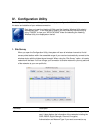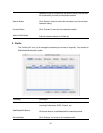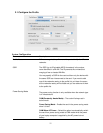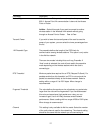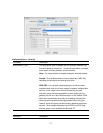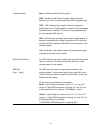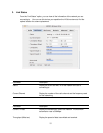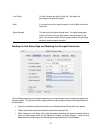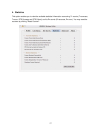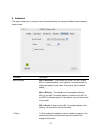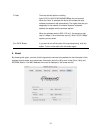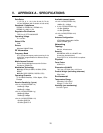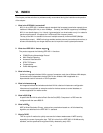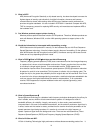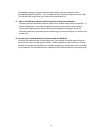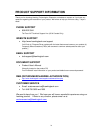
21
VI. INDEX
This chapter provides solutions to problems usually encountered during the installation and operation
of the adapter.
1. What is the IEEE 802.11n standard?
802.11n is an IEEE 802.11 wireless network standard that increases transmission speeds from a
traditional 11Mbps (802.11b) to over 100Mbps. Currently, the HWUN1 supports up to 300Mbps.
802.11n can handle legacy 11a, 11b and 11g transmission in a mixed mode or only 11n nodes for
maximum performance. It supports the 2.4GHz and 5GHz frequency bands.
The key to the 802.11n standard is the use of multiple antennas, known as MIMO (Multiple
input/multiple output). MIMO technology enables two data streams, transmitter and receiver, to
be sent simultaneously over longer distances and to impre the overall system performance.
2. What does IEEE 802.11 feature support?
The product supports the following IEEE 802.11 functions:
z CSMA/CA plus Acknowledge Protocol
z Multi-Channel Roaming
z Automatic Rate Selection
z RTS/CTS Feature
z Fragmentation
z Power Management
3. What is Ad-hoc?
An Ad-hoc integrated wireless LAN is a group of computers, each has a Wireless LAN adapter,
Connected as an independent wireless LAN. Ad hoc wireless LAN is applicable at a
departmental scale for a branch or SOHO operation.
4. What is Infrastructure?
An integrated wireless and wireless and wired LAN is called an Infrastructure configuration.
Infrastructure is applicable to enterprise scale for wireless access to central database, or
wireless application for mobile workers.
5. What is BSS ID?
A specific Ad hoc LAN is called a Basic Service Set (BSS). Computers in a BSS must be
configured with the same BSS ID.
6. What is WEP?
WEP is Wired Equivalent Privacy, a data privacy mechanism based on a 40 bit shared key
algorithm, as described in the IEEE 802 .11 standard.
7. What is TKIP?
TKIP is a quick-fix method to quickly overcome the inherent weaknesses in WEP security,
especially the reuse of encryption keys. TKIP is involved in the IEEE 802.11i WLAN security
standard, and the specification might be officially released by early 2003.



